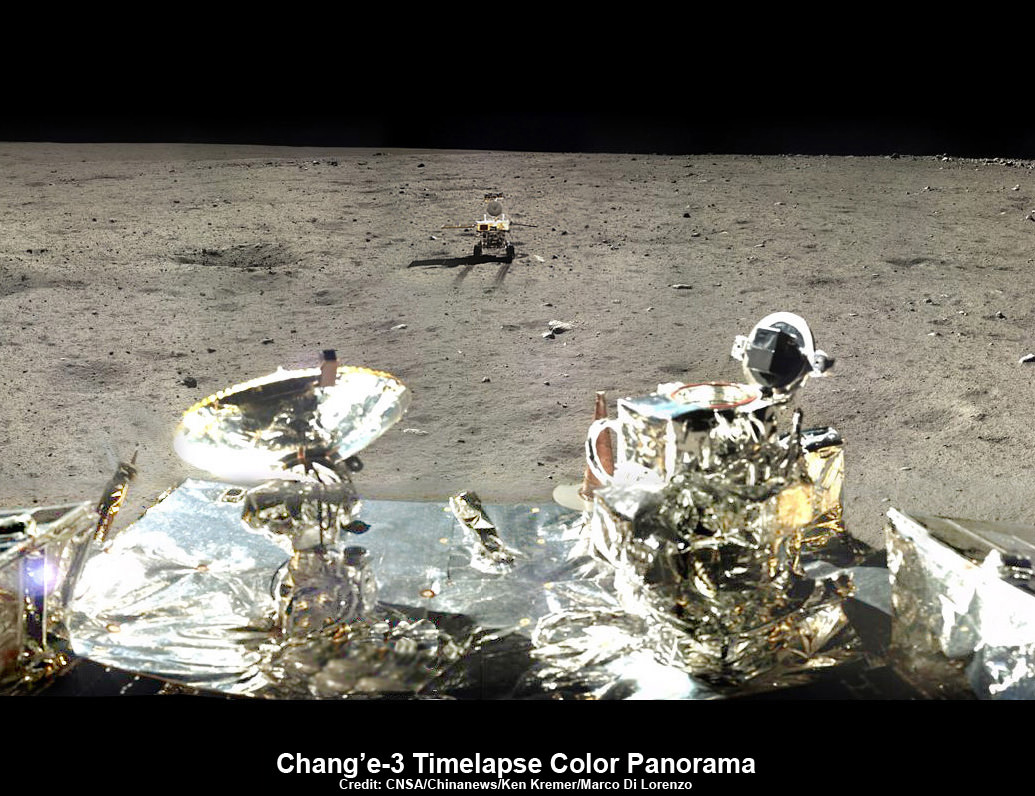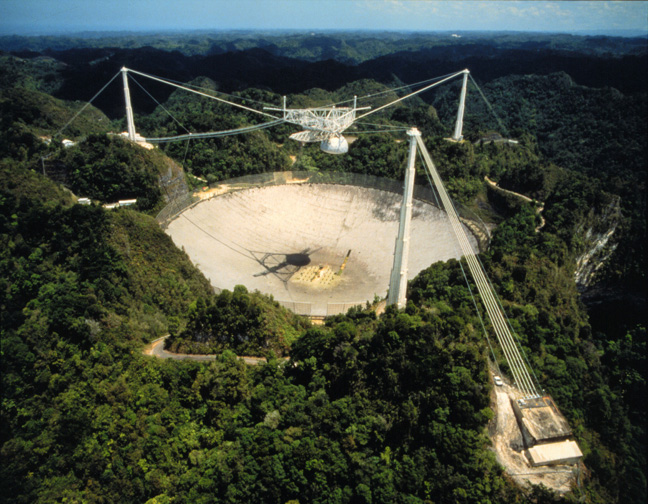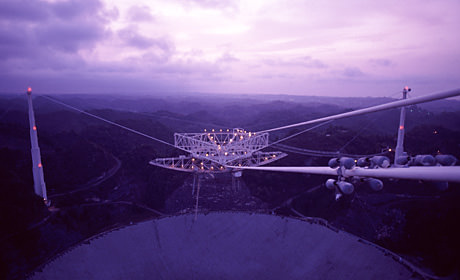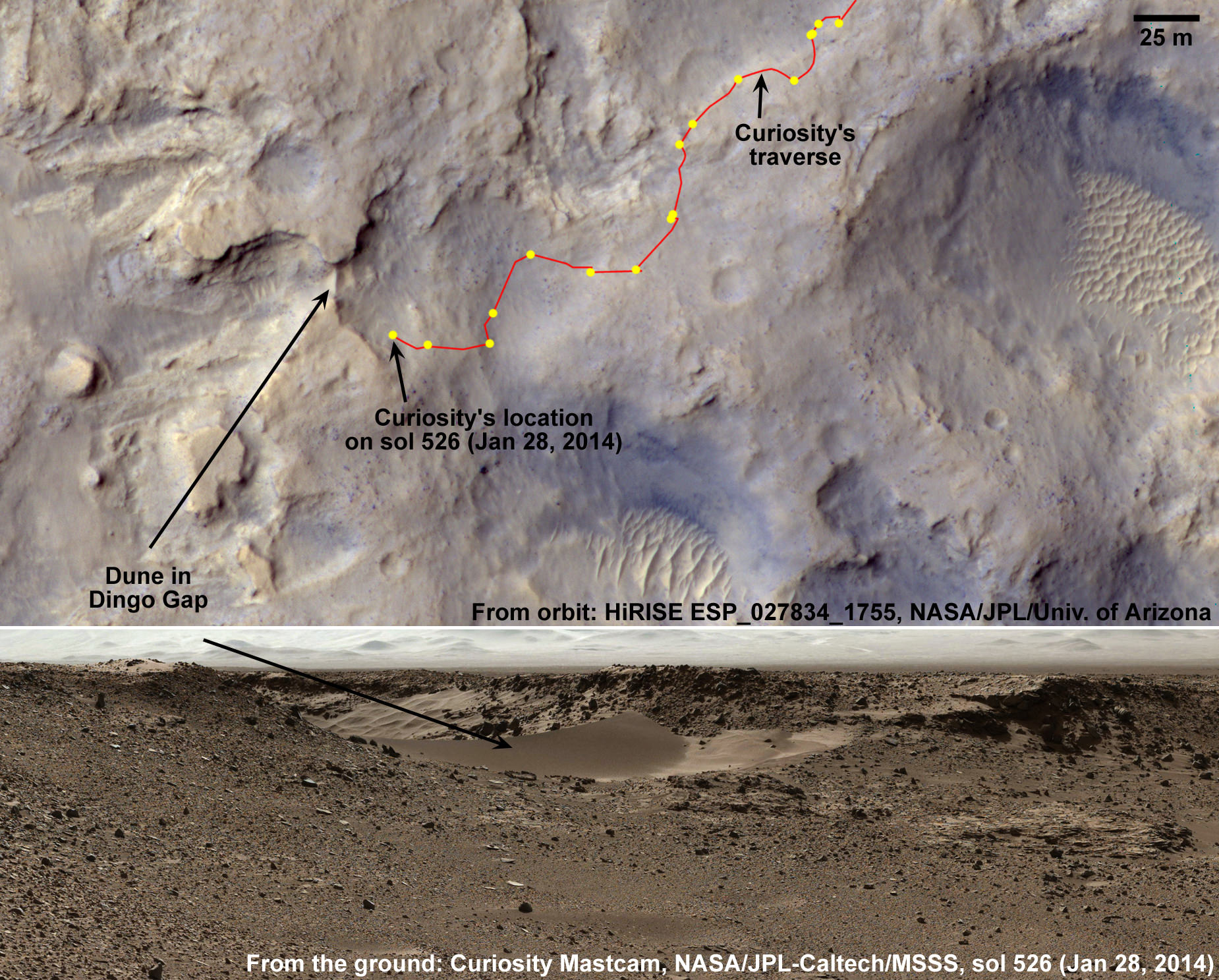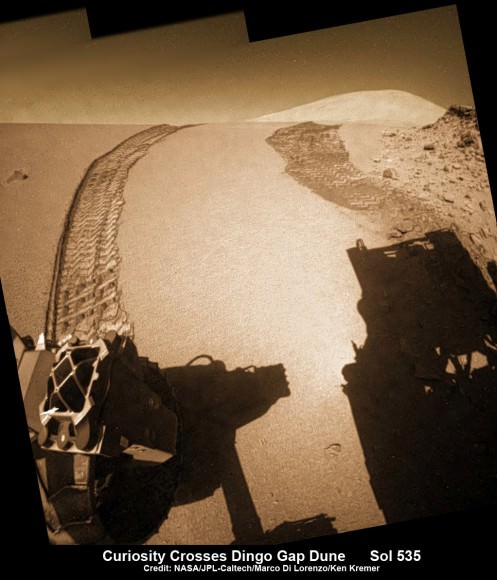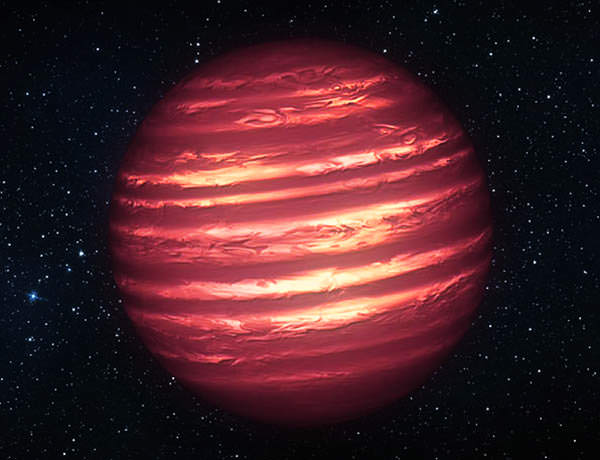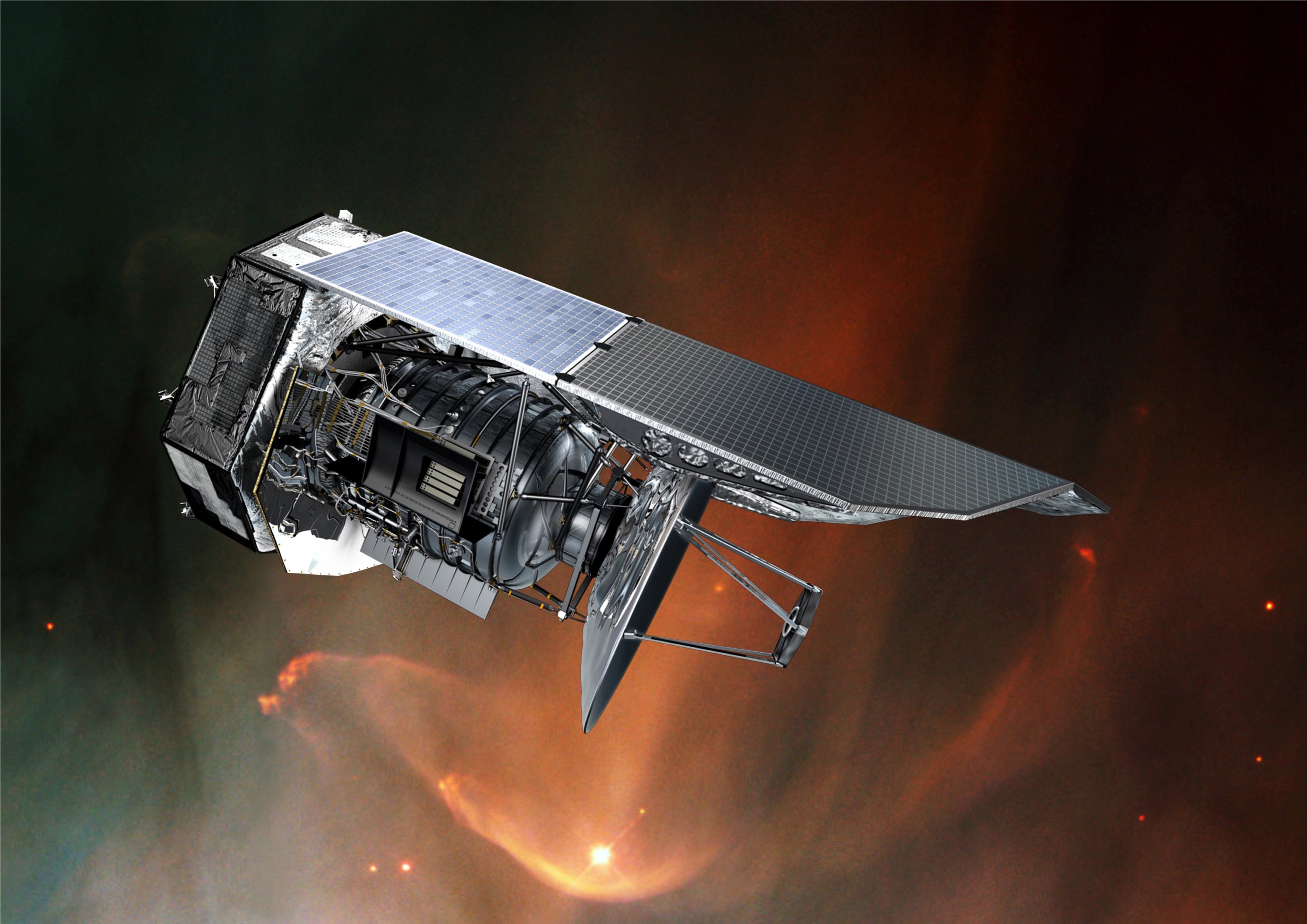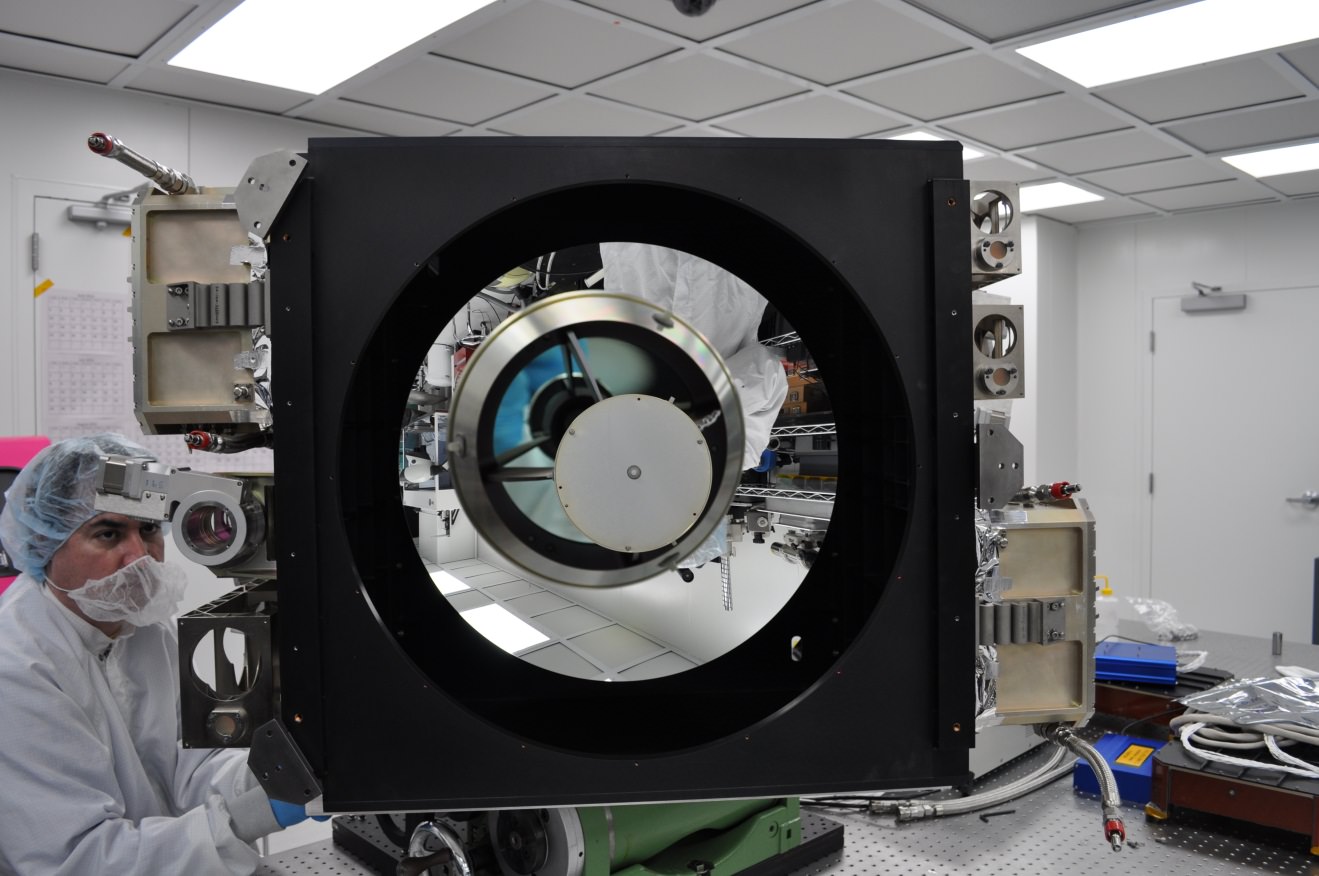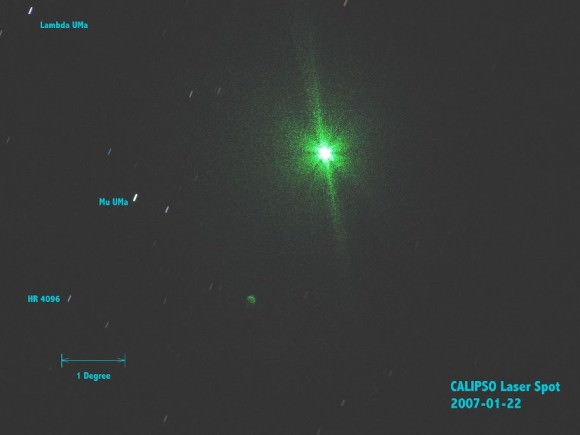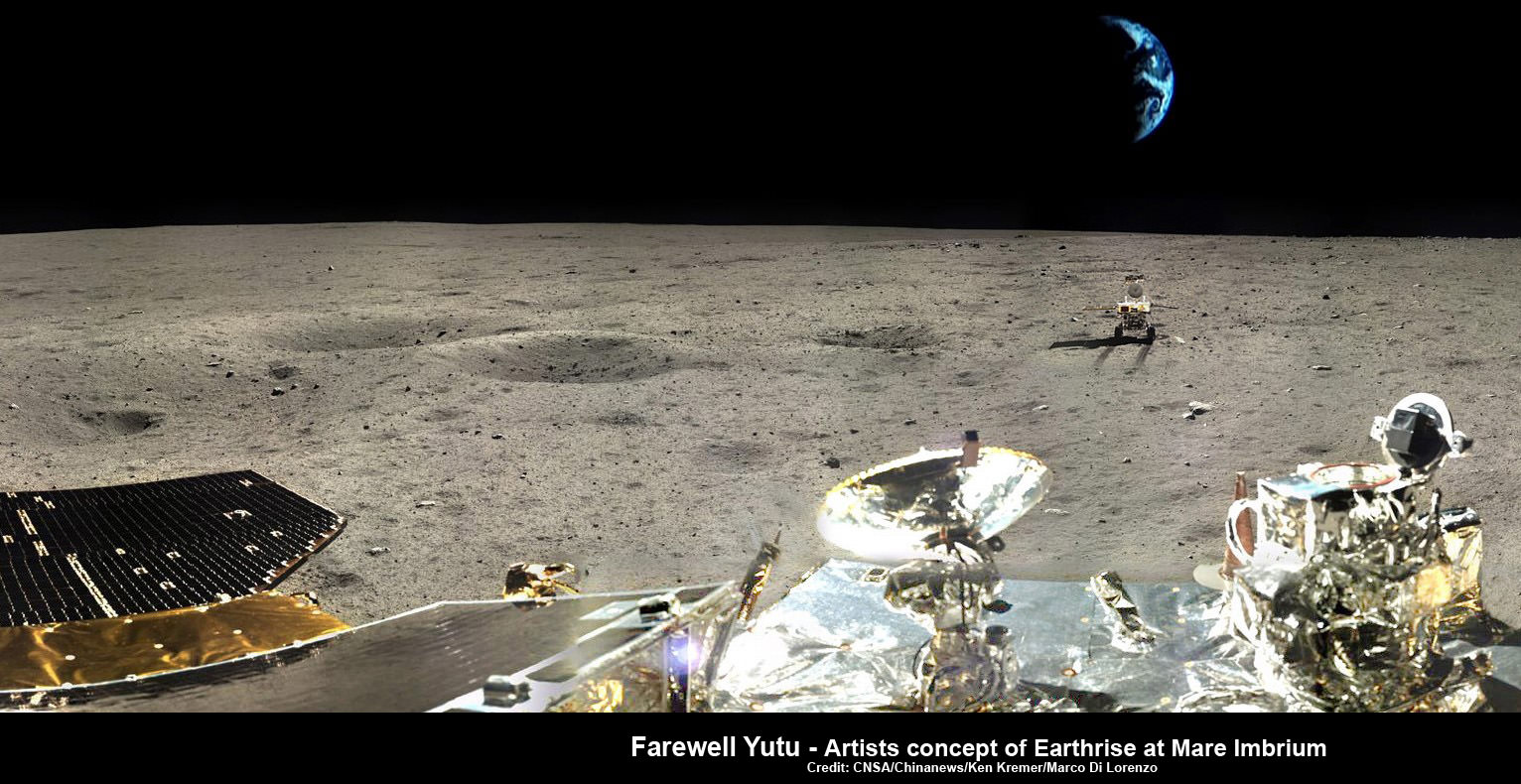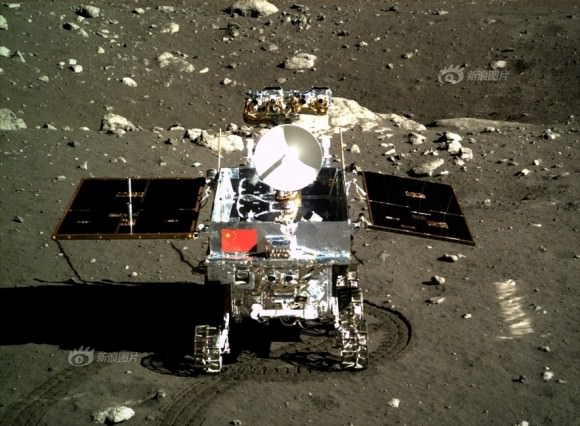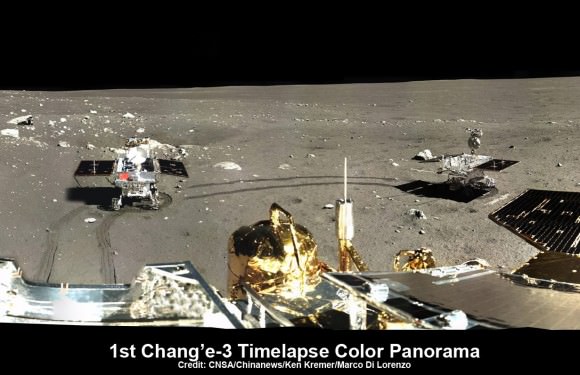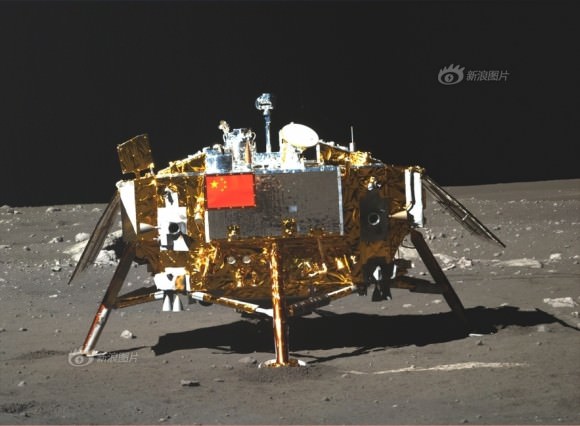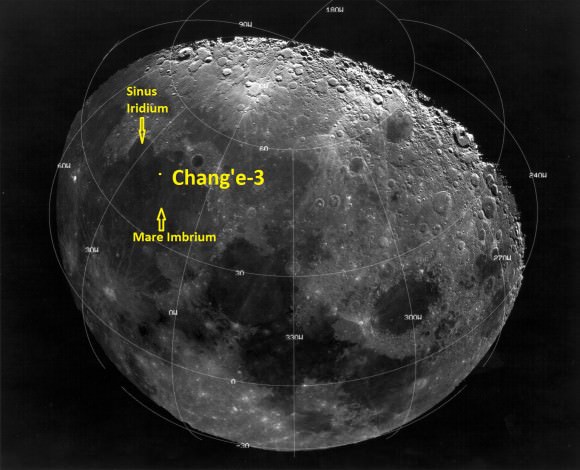Yutu Lives!
The little ‘rabbit’ beloved worldwide has now phoned home and actually survived the perils of the long lunar night and is alive and awake to start a 3rd day of scientific exploration despite suffering a serious malfunction as it entered the latest hibernation period two weeks ago.
“Yutu has come back to life!” said Pei Zhaoyu, the spokesperson for China’s lunar probe program, according to a breaking news report by the state owned Xinhua news agency.
“Experts are still working to verify the causes of its mechanical control abnormality.”
The Chang’e-3 mothership lander and piggybacked Yutu surface rover soft landed on the Moon on Dec. 14, 2013 at Mare Imbrium (Sea of Rains) – marking China’s first successful spacecraft landings on an extraterrestrial body in history.
Yutu’s new lease on life also comes after Monday’s (Feb. 11) premature report of the robots demise by the state owned China News Service, reported here.
However, “Yutu failed to power-up Monday [Feb 11] and data about its current condition and repair progress is still being collected and analyzed,” Xinhua and CCTV (China state run television) reported.
This indicates that Yutu was in fact feared lost for some time by the mission team, until further efforts finally resulted in the detection of a signal from the spacecraft – and a welcome reversal of yesterdays news!
The robot “has now been restored to its normal signal reception function,” says Pei.
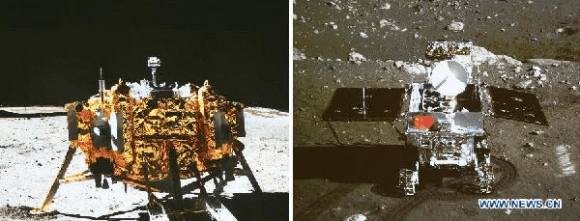
Earlier today (Feb. 12) amateur radio operators at UHF-satcom reported detection of a signal from Yutu.
But much technical work remains ahead for the engineering and science teams to ascertain why it malfunctioned and whether the six wheeled rover can be restored to partial or full functionality.
As night fell on Jan. 25, the rover entered its second two week long period of dormancy just as the rover “experienced a mechanical control abnormality,” according to a report by China’s official government newspaper, The People’s Daily.
“Yutu went into sleep under an abnormal status,” Pei said.
“Experts were initially concerned that it might not be able to survive the extremely low temperatures during the lunar night.”

This 360-degree time-lapse color panorama from China’s Chang’e-3 lander shows the Yutu rover at three different positions during its trek over the Moon’s surface at its landing site from Dec. 15-22, 2013 during the 1st Lunar Day. Credit: CNSA/Chinanews/Ken Kremer/Marco Di Lorenzo – kenkremer.com. See our Yutu timelapse pano at NASA APOD Feb. 3, 2014: http://apod.nasa.gov/apod/ap140203.htm
Each lunar day and night lasts for alternating periods of 14 Earth days.
During each long night, the Moon’s temperatures plunge dramatically to below minus 180 Celsius, or minus 292 degrees Fahrenheit.
Both solar powered probes must enter hibernation mode during each lunar night to conserve energy and protect their science instruments and control mechanisms, computers and electronics.
“The rover stands a chance of being saved now that it is still alive,” Pei stated.
Yutu, which translates as ‘Jade Rabbit’ is named after the rabbit in Chinese mythology that lives on the Moon as a pet of the Moon goddess Chang’e.
‘Jade Rabbit’ had departed the landing site forever, and was journeying southwards as the anomoly occurred – about six weeks into its planned 3 month long moon roving expedition to investigate the moon’s surface composition and natural resources.
The 140 kg Yutu robot is located some 100 m south of the lander.

Definitive word about the Chang’e-3 lander has not yet been announced. But it is expected to survive since no malfunctions have been reported. It has a 1 year design lifetime.
Xinhua stated that Chinese space officials will comment on the landers status soon.
The 1200 kg stationary lander is expected to return science data about the Moon and conduct telescopic observations of the Earth and celestial objects for at least one year.
Chang’e-3 and Yutu landed on a thick deposit of volcanic material.
The inaugural pair of probes could be the forerunners to a manned Chinese Moon landing mission a decade from now.
China’s current plans call for the Chang’e-4 Moon lander/rover to launch in 2016, perhaps with some upgrades and lessons learned from the ongoing mission.
China is only the 3rd country in the world to successfully soft land a spacecraft on Earth’s nearest neighbor after the United States and the Soviet Union.
Stay tuned here for Ken’s continuing Chang’e-3, Orion, Orbital Sciences, SpaceX, commercial space, LADEE, Mars and more planetary and human spaceflight news.

